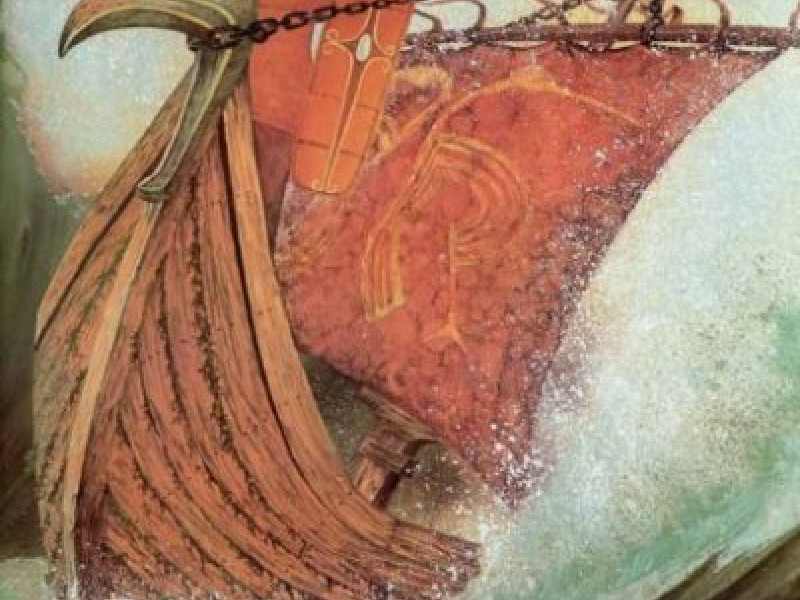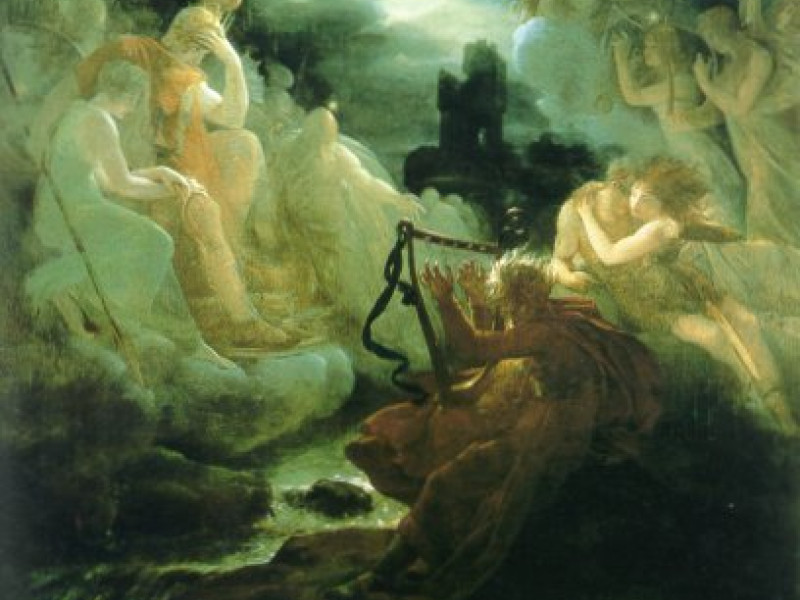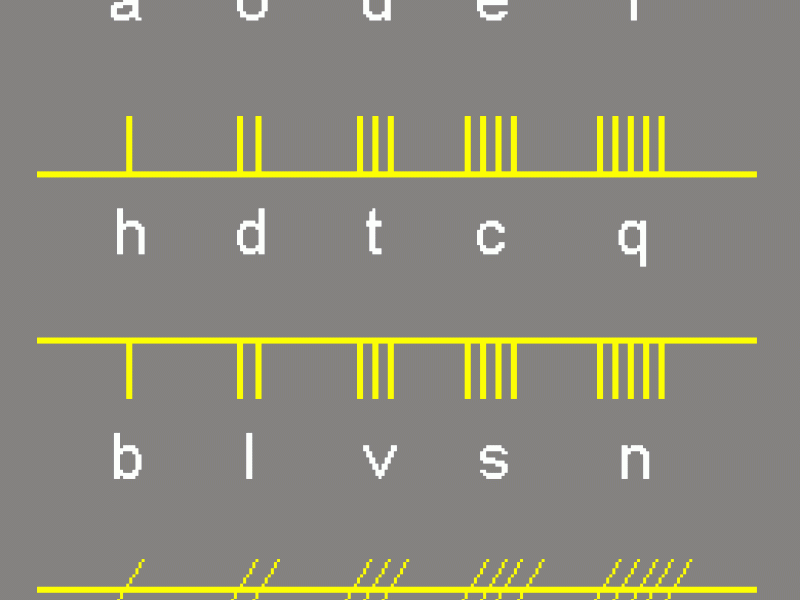The Real Invasions
I have retold the legends of the settlements of Ireland by successive invaders, which were based on the pseudo-historical Lebor Gabala (Book of Invasions) and on Cath Maige Tuired (Second Battle of Turied), but now I will give you a background of what some researchers have determined to be the true invasions of Ireland.
The Book of Invasions may contain some elements of truth about the early inhabitants of Ireland - namely that of successive tribes that tried to colonise Ireland, including the Celtic speaking people known as the Gaels.
Irish Language
The Celtic languages are divided into two main groups - Continental Celtic and Insular Celtic.
The Continental Celtic consisted of those languages spoken on the continent. From what I have been able to gather, there are two main Continental languages - Gaullish and Celto-Iberian.
The Gaulish language referred to the language spoken by ancient Celtic people living in Gaul, which includes all of France, Belgium, the Lower Countries, part of Switzerland and Austria, the Alps, and the northern part of Italy. There were many different Gaulish tribes, so it is assumed that the Gauls may have had as many different dialects.
Celto-Iberian was spoken on the Iberian Peninsula by an ancient people who probably lived with native Iberian people in mostly north and central Spain; mainly between the Ebero and Tagus rivers. One of their chief cities included Numantia, which was besieged and sacked by the Romans in 133 BC.
There is another group of Celtic people which migrated to the east and settled in central Asia Minor (mid-2nd century BC). They were known as the Galatians. I don't know if they spoke a different Celtic language from the Gauls. The region where they lived became known as Galatia; it became a Roman protectorate, and the apostle Paul visited and wrote letters to the Galatian followers.
All Continental Celtic languages are extinct and very little is known about these languages. The Insular Celtic is better documented.
Continental Celtic | Gaullish (unknown number of dialects) Celto-Iberian Lepontic | |
Insular Celtic | P-Celtic | Welsh Cornish Breton |
Q-Celtic | Irish Gaelic Scottish Gaelic Manx | |
The Insular Celtic refers to the languages spoken in the British Isles and Brittany. Insular Celtic was itself, divided into two broad groups, in which the modern Celtic languages were derived from - Brythonic (British) and Goidelic (Irish).
Brythonic is also called the P-Celtic group of languages, which comprised of Welsh, Cornish and Breton.
By the time the Romans left and the Anglo-Saxons settled in Britain, the Celtic Britons had settled in regions that still exist today. Cornish was spoken in Cornwall, south-west England. Welsh was spoken in most parts of England before the Anglo-Saxons, and that included in the southern part of Scotland. Ancient Scotland was known as Caledonia or Alba at the time of the Romans. Some of the Welsh-speaking Britons fled across the channels to the Armorican Peninsula, which later changed its name to Brittany. However, Welsh and Breton became unintelligible.
The Goidelic languages were referred to as the Q-Celtic group of languages, which comprised of Irish Gaelic, Scottish Gaelic and Manx (from the Isle of Man).
It is not certain if Ireland had ever spoken a P-Celtic language before the Gaelic Celts settled on this isle. Ireland was called Ierna by the 2nd-century geographer Ptolemy, while it was called Hiberia by the Romans. The people of Ireland were also called the Scotti, so Ireland was also called Scotia. Around the 4th century, these Scotti invaded and colonised Argyll in Alba and established a kingdom known as Dal Riada. The Scotti warred and then intermingled with the Picts, and the whole Alba of was renamed to Scotland. That was the reason why Scotland spoke a Gaelic language and shared strong cultural, mythological and folkloric ties to Ireland.
The Irish also settled on the Isle of Man around the 5th century, displacing the P-Celtic language spoken there. The Irish invaders also established a kingdom called Dyfed in southern Wales.
But how did the Gaelic people reach Ireland?
Gaelic Invaders
So where did the Gaelic people come from?
Like in Britain, the Celtic people had arrived in Ireland only in the 1st millennium BC. It's clear from archaeological evidence that there were people living in both Ireland and Britain before the arrival of the P and Q Celtic people in the 6th-5th century BC.
It was these pre-Celtic people who were part of the megalithic cultures, cultures that erected large standing stones and megalithic tombs. It is an 18th and 19th century myth that the Celtic druids were involved in long barrows in Ireland or stone circles, like Stonehenge in England.
There are several routes in which the people might have journeyed to and settled in Ireland. Migrating people could travel to the Ireland's eastern shore directly from Britain, or from the Continent via Britain. On the other hand, people could migrate from the south and west, from the Continent, either from Gaul (France) or Spain. During the Viking period, the Vikings landed upon northern shores of Ireland from Scandinavia via either their bases from Britain (northern England or Scotland) or the Hebrides islands (especially in Orkney).
It is not certain if the people, known to the Roman people as the Picts that lived in ancient Alba (Scotland), lived in Ireland too. Since the Picts left no written records, it is also uncertain what the Picts called themselves. In the Q-Celtic languages like Irish, the Picts were called Cruithni, Cruithnig, Cruithne or Cruithin. In P-Celtic, the Picts were called Preteni or Pretani.
According to the 2nd century geographer Ptolemy, Ireland was called Ierna; it was called Hiberia. The people of Ierna were known as the Iverni, which was identified with the Érainn. It is generally believed today that the Erainn or Iverni arrived after the Cruithni (Picts).
It was also said that the Belgae, a tribe which lived in Gaul between the Seine and Marne, also settled and established a southern kingdom in Britain before Caesar's campaign in Gaul. They may have also migrated to Ireland. However, one scholar argued that the Erainn could be identified with the Belgae, a view that most scholars disagree with.
The Lagin followed Erainn and settled mostly in the region that was later called Leinster, and also in Connacht. It is said in their legends that the Lagin had come from Armorica (Brittany).
The true Gaels or Goidels or Irish were the last invaders, known as the Féni, and are to be equated with the legendary Milesians in the Lebor Gabala (Book of Invasions). It is generally believed that the Feni migrated to the isle directly from the Continent, instead of via Britain.
By Jimmy Joe






